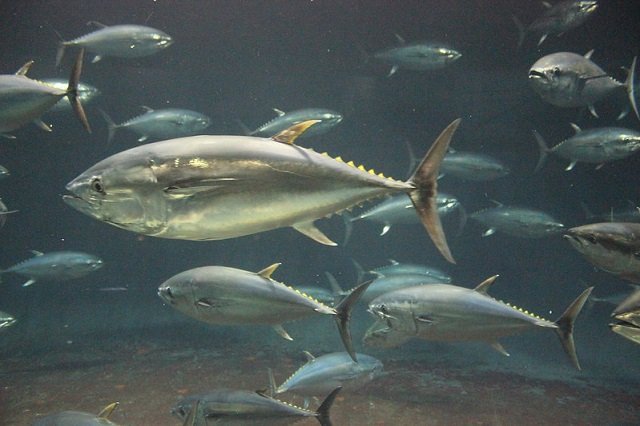In traditional Atlantic salmon (Salmo salar) aquaculture, fish typically spend 12 to 18 months in freshwater hatcheries before being transferred to cages as smolts weighing between 100 and 150 grams. These salmon are then reared for 18 to 24 months and harvested when they reach the commercial size of approximately 5.5 kilograms.
Currently, land-based hatcheries are capable of raising larger post-smolts of salmon, which means that marine cages can be stocked with larger fish.
This cultivation strategy aims to reduce the time required for fish to grow to market size and minimize risks. In this regard, a team of researchers from the Centre for Marine Applied Research, C&H Aquatic and Laboratory Veterinary Services Ltd, Aquaculture Nutrition Services Inc., and System Science Applications Inc. investigated the application of this strategy for raising salmon in areas that were previously considered unsuitable due to low seasonal temperatures.
The importance of temperature
Temperature is a key consideration for selecting the location of a salmon farm. Virtually all fish (including salmon) are ectotherms, meaning their body temperature is regulated by the environment and governs their biological processes.
Fish can grow within a wide range of temperatures, but growth becomes slow if the water is too cold or too warm, particularly in the presence of other stressors such as low dissolved oxygen levels. Prolonged exposure to extreme temperatures can cause mortality.
Atlantic salmon typically grow at temperatures between 4 – 18°C, with heat stress occurring around 16 – 18°C. On the other hand, cold water (< 4 – 6°C) also results in lower growth rates, decreases stress response, and eventually leads to mortality.
Thermal Growth Coefficient (TGC) model
The Thermal Growth Coefficient (TGC) model explains the effects of temperature on ectothermic growth and is commonly used to project fish growth rates in aquaculture.
There are several assumptions of the TGC model for its application in aquaculture. Fish farming practices aim to harvest fish before sexual maturity, when they allocate less energy to growth, to avoid lower feed conversion efficiency.
In this context, the researchers employed the TGC model to estimate the stocking weight required to reach a harvest size of 5.5 kg, based on degree days observed at three sites.
Stay Always Informed
Join our communities to instantly receive the most important news, reports, and analysis from the aquaculture industry.
Data source
“Here we developed a method to explore the suitability of new aquaculture sites using the TGC model and high-resolution coastal temperature profiles,” they reported.
They employed time series of temperature, divided by depth, from coastal locations in the Atlantic of Canada to represent a short, medium, and long growth season, limited by extreme seasonal temperatures.
“Growth days for model inputs were defined as temperatures > 4°C and trending upward for stocking, < 18°C to account for heat stress, and > -0.7°C to avoid extreme cold conditions,” they described in the study.
Potential for seasonal site use
“The results of the TGC model showed that fish weighing between 1.5 and 2.5 kg can theoretically grow to reach commercial size in seasonal sites,” they reported.
Additionally, the researchers describe that this suggests post-smolt restocking strategies may potentially allow the use of new sites in areas previously considered unsuitable for aquaculture due to low winter temperatures.
“Transferring large post-smolts to marine cages can compensate for some of the challenges, and we recommend future research on the costs and benefits of farming large post-smolts on land for restocking in new sites,” the researchers recommend.
Site suitability assessment
“The approach discussed here highlights that the TGC model, together with high-resolution site-specific temperature data, can be a useful tool for assessing the suitability of new areas,” the researchers emphasized.
They describe that temperature data can provide information on optimal stocking and harvest dates, as well as early heat stress assessment. “For example, local temperature profiles were key in determining the optimal stocking date, which was related to both latitude and depth,” they said.
Conclusion
The results were sensitive to the number of degree days, the heat stress threshold, and the TGC value. In the two sites where the season duration was limited by supercooling, fish with a stocking weight of approximately 1.5 kg could grow to reach commercial size in shallow waters (<15 m), assuming elite growth performance.
“This research suggests that with appropriate growth performance assumptions and high-resolution temperature data, large post-smolt restocking strategies could allow the use of new sites in coastal areas that were previously considered unsuitable for aquaculture,” they conclude.
Finally, the researchers highlight that the method is straightforward to apply to any potential site with temperature records and could be easily adopted for other species with known TGC values and heat stress thresholds.
Reference (open access)
Dempsey DP, Reid GK, Lewis-McCrea L, Balch T, Cusack R, Dumas A and Rensel J (2023) Estimating stocking weights for Atlantic salmon to grow to market size at novel aquaculture sites with extreme temperatures. Front. Mar. Sci. 10:1094247. doi: 10.3389/fmars.2023.1094247
Editor at the digital magazine AquaHoy. He holds a degree in Aquaculture Biology from the National University of Santa (UNS) and a Master’s degree in Science and Innovation Management from the Polytechnic University of Valencia, with postgraduate diplomas in Business Innovation and Innovation Management. He possesses extensive experience in the aquaculture and fisheries sector, having led the Fisheries Innovation Unit of the National Program for Innovation in Fisheries and Aquaculture (PNIPA). He has served as a senior consultant in technology watch, an innovation project formulator and advisor, and a lecturer at UNS. He is a member of the Peruvian College of Biologists and was recognized by the World Aquaculture Society (WAS) in 2016 for his contribution to aquaculture.




